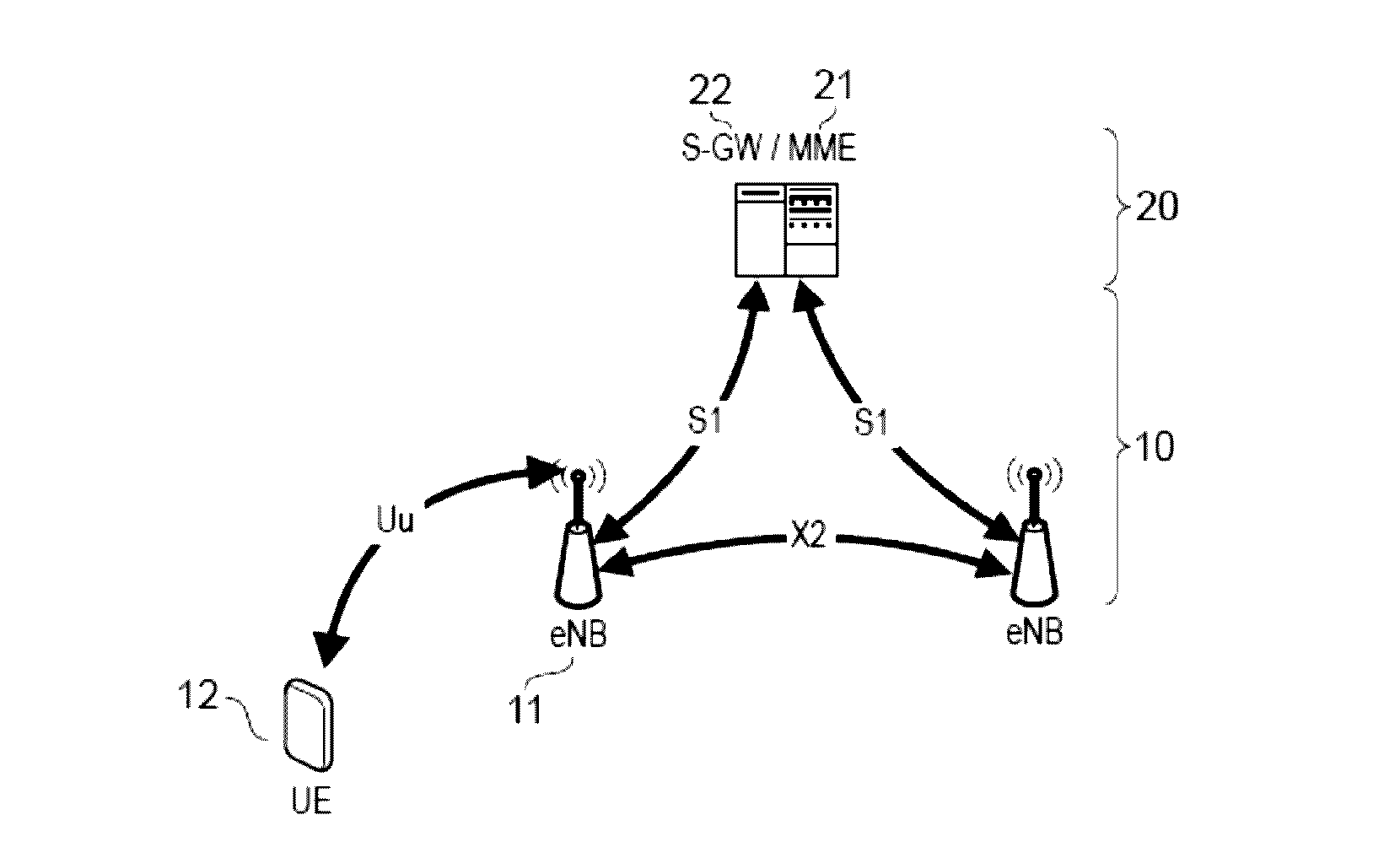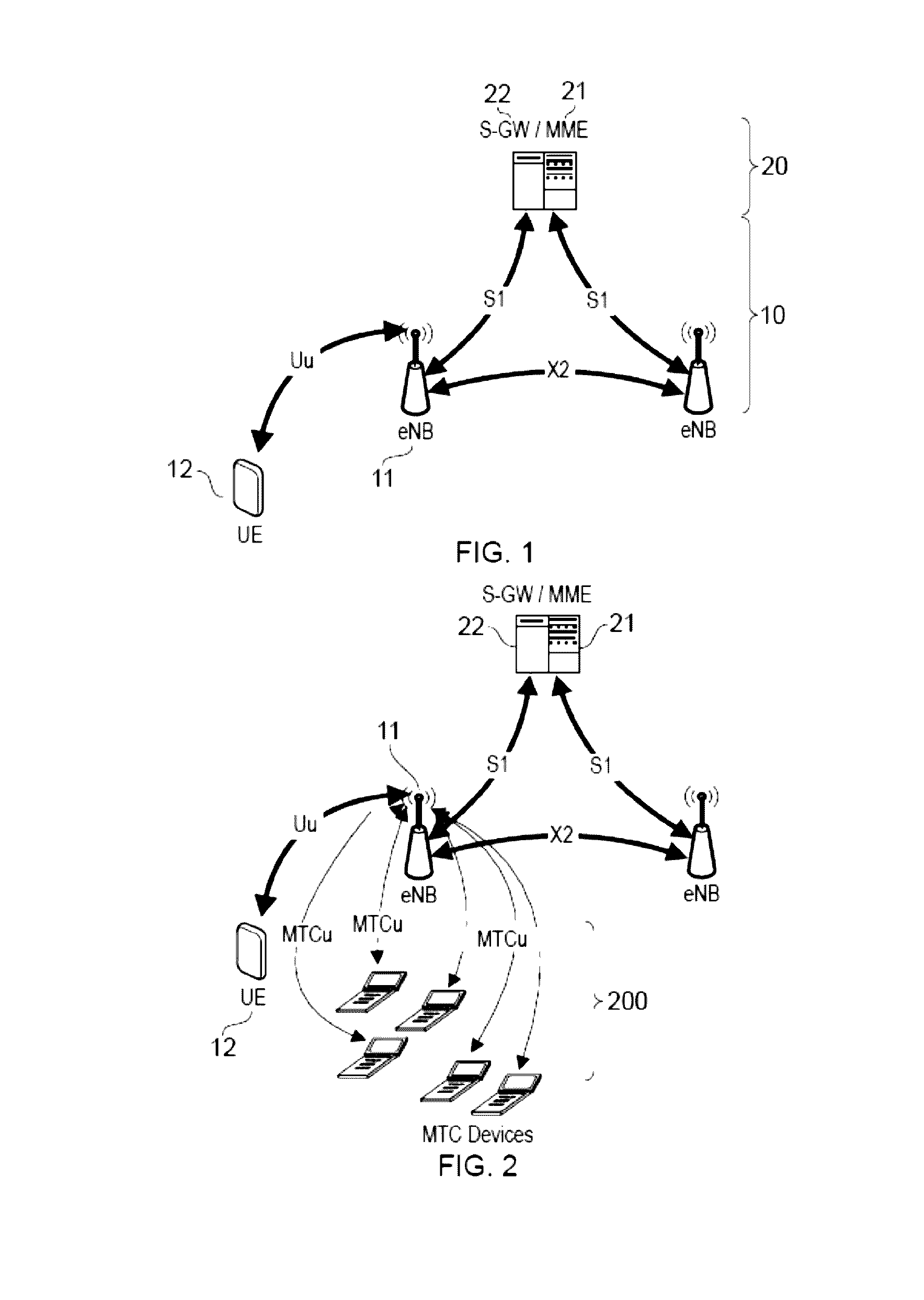Coverage Extension in Wireless Communication
a wireless communication and extension technology, applied in the direction of connection management, power management, electrical equipment, etc., can solve the problems of occupying a significant amount of time, affecting the service life of the network access procedure in lte, and being less optimal for machine-to-machine, so as to reduce interference and less disruption to other traffic
- Summary
- Abstract
- Description
- Claims
- Application Information
AI Technical Summary
Benefits of technology
Problems solved by technology
Method used
Image
Examples
first embodiment
[0122]In a first embodiment, the use of ECM is scheduled for particular times of day (e.g. at night) which would not disturb normal traffic. The PBCH, ePBCH, SIBs, eSIBs are all transmitted continuously. Normally, ePBCH (and thus the eSIBs) are transmitted in different physical layer resources from PBCH (SIBs). One or more of the eSIBs (for example, eSIB1), contains information describing the schedule when ECM operation is available (e.g. time of day or in terms of system frame number).
[0123]Here the schedule may relate to one or more channels, and may comprise different schedules for different channels. For example, the schedules for uplink ePUSCH and downlink ePDSCH may be different. Part of the schedule (e.g. for transmission of eSIBs) may be pre-defined. Part of the schedule may be implicit; for example, if a schedule is signalled for the control channel ePDCCH or eEPDCCH, this may also implicitly define a corresponding schedule for PDSCH and associated downlink transmission of ...
fifth embodiment
[0130]In a fifth embodiment, a mobile network operator surveys an area which has poor received signal strength and stores information on signal strength and MTc devices installed, for later use in ECM. For example, smart meter installation may include a site survey of signal strength; if during the smart meter installation low signal strength is measured, then this information is stored to inform the decision process of a given cell to use enhanced SIB information broadcast. An eNB of the cell (or higher level node) then devises the ECM schedule on the basis of the stored information.
sixth embodiment
[0131]In a sixth embodiment, a UE can store in its memory the number of repetitions which the UE needed to decode ePBCH, and the signal strength and success or not of decoding PBCH and / or ePBCH, for later reporting to the network. The network would use this information to update the ECM schedule in order to maximise efficiency of the use of radio resources.
PUM
 Login to View More
Login to View More Abstract
Description
Claims
Application Information
 Login to View More
Login to View More - R&D
- Intellectual Property
- Life Sciences
- Materials
- Tech Scout
- Unparalleled Data Quality
- Higher Quality Content
- 60% Fewer Hallucinations
Browse by: Latest US Patents, China's latest patents, Technical Efficacy Thesaurus, Application Domain, Technology Topic, Popular Technical Reports.
© 2025 PatSnap. All rights reserved.Legal|Privacy policy|Modern Slavery Act Transparency Statement|Sitemap|About US| Contact US: help@patsnap.com



